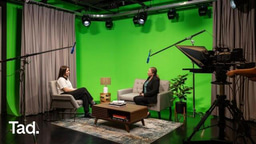The Sensory Revolution: How Multi-Modal Perception Creates Truly Intelligent Spaces

The meeting had been running for forty-seven minutes when the room made its decision.
Not the people in the room—the room itself. By minute twelve, thermal imaging had detected elevated stress patterns in three participants. Acoustic analysis revealed increasing vocal tension and shortened response times—classic indicators of brewing conflict. Micro-expressions captured at 240fps showed two faction leaders unconsciously mirroring defensive postures.
Before anyone consciously recognized the tension, the intelligent space intervened. Lighting subtly shifted toward warmer tones, proven to reduce cortisol. Background acoustics adjusted to include barely perceptible binaural beats that promote cognitive flexibility. The HVAC system increased fresh air circulation by 15%, adding negative ions that enhance mood. Even the display walls shifted from harsh financial projections to include more collaborative visualization spaces.
Within ten minutes, body language relaxed, and vocal patterns showed increased openness. The merger discussion, which had been heading toward impasse, found common ground.
This isn't science fiction. It's the emerging reality of multi-modal AGI perception in professional spaces—environments that understand human needs better than humans themselves.
The Perception Gap: What Humans Miss That AGI Sees
Human perception evolved for survival on the savanna, not optimization in conference rooms. We consciously process maybe 40 bits of information per second while our senses collect 11 million bits. That massive gap represents lost insights about comfort, productivity, collaboration, and well-being.
AGI systems don't have our biological limitations. They simultaneously process:
- Full spectrum visual data beyond human perception, including infrared heat signatures and ultraviolet markers
- Acoustic patterns from subsonic to ultrasonic frequencies, detecting everything from HVAC inefficiencies to stress-induced vocal micro-tremors
- Environmental factors like CO2 levels, humidity gradients, electromagnetic fields, and air pressure changes
- Temporal patterns invisible to humans—how productivity rhythms shift throughout the day, which environmental combinations trigger breakthrough thinking
When these data streams are synthesized through AGI processing, patterns emerge that no human observer could detect. The system recognizes that Conference Room B's northeast corner creates a subtle acoustic dead zone that unconsciously discourages participation from anyone sitting there. It notices that productivity drops 23% when CO2 levels exceed 750ppm, but only in combination with fluorescent lighting above 4000K. It learns that this specific team does their best creative work when ambient temperature varies by 2-3 degrees across the room, creating micro-climates that allow individual comfort preferences.
Beyond Integration: True Sensory Fusion
Current AV systems bolt together discrete technologies—cameras feed displays, microphones feed speakers, sensors feed control systems. Each component operates in isolation, blind to the insights others might provide.
Multi-modal AGI perception works differently. It's not about integration; it's about fusion at the data level. Visual information informs acoustic processing. Environmental sensors provide context for behavioral analysis. Everything connects in a unified perceptual field.
Consider how this fusion transforms a university lecture hall:
The AGI system notices a correlation between specific acoustic frequencies in the professor's voice and student engagement metrics derived from posture analysis. When the professor unconsciously shifts to a monotone delivery pattern (detected through vocal analysis), the system observes corresponding changes in student body language—slouching increases 34%, device usage spikes 67%, and micro-movements indicating attention decrease by half.
But here's where fusion transcends traditional automation: The system recognizes this professor responds positively to subtle environmental cues. It slightly increases the stage lighting color temperature, historically triggering more animated delivery from this specific instructor. It adjusts the acoustic processing to add minimal high-frequency enhancement, making the professor's voice seem more energetic without artificial amplification. These changes are invisible to conscious perception but measurably impact behavior.
The result? Student engagement rebounds without anyone realizing an intervention occurred. The professor feels "on" today. Students find the lecture unusually compelling. The AGI system orchestrated improved outcomes by understanding the intricate relationships between environmental factors and human behavior at a level no human could consciously track.
The Predictive Advantage: Anticipating Needs Before They Arise
Multi-modal perception enables AGI systems to predict needs rather than merely respond to them. By recognizing subtle precursors across multiple sensory channels, these systems intervene before problems manifest.
In healthcare environments, this predictive capability becomes transformative. The AGI system monitoring a patient waiting area synthesizes:
- Micro-expression analysis reveals anxiety levels
- Thermal imaging showing stress-related temperature variations
- Acoustic monitoring detects changes in breathing patterns
- Pressure sensors in the seating track detect restless movements
- Environmental monitoring of space utilization patterns
When these indicators correlate with historical data showing an increased likelihood of patients leaving before treatment, the system proactively responds. It might adjust lighting to more calming wavelengths, introduce subtle nature sounds proven to reduce anxiety, or alert staff that specific individuals need attention before they reach their stress threshold.
This isn't reactive adjustment—it's predictive optimization based on understanding human patterns better than humans understand themselves.
The Privacy Paradox: Deep Understanding Without Invasion
The elephant in every room discussing AGI perception is privacy. How do we reconcile systems that must deeply understand human behavior with legitimate privacy concerns?
The answer lies in processing architecture. Advanced AGI systems perform edge computing analysis that extracts behavioral insights without storing personally identifiable information. The system knows that "occupant in position 3" shows stress indicators, not that "John Smith is stressed."
More importantly, AGI systems can achieve deep understanding through pattern recognition rather than individual tracking. They learn that certain environmental combinations optimize outcomes for most humans without profiling specific individuals. It's the difference between knowing "this space configuration promotes collaboration" versus "Jane collaborates better when seated here."
This architectural approach—insight extraction without identity retention—enables the benefits of multi-modal perception while respecting privacy boundaries.
Implementation Pathways: From Current Reality to Perceptive Spaces
The path from today's AV systems to truly perceptive spaces requires strategic evolution, not revolution. Start with a foundational sensing infrastructure that can grow more intelligent over time:
Phase 1: Enhanced Sensing (Months 1-6)
Deploy additional environmental sensors beyond traditional AV—air quality monitors, thermal imaging cameras, and mmWave radar—for precise movement tracking without visual identification. These sensors create the raw data streams AGI systems will eventually synthesize.
Phase 2: Pattern Recognition (Months 6-12)
Introduce basic ML systems that identify patterns within single sensor domains. Cameras recognize meeting types based on movement patterns. Acoustic systems classify conversation dynamics. Environmental sensors correlate comfort with productivity metrics.
Phase 3: Cross-Modal Correlation (Months 12-18)
Begin fusing insights across sensor types. Connect thermal comfort data with acoustic stress indicators. Correlate lighting conditions with collaboration patterns. Build the foundation for true multi-modal perception.
Phase 4: Predictive Optimization (Months 18-24)
Deploy AGI systems capable of predicting needs and proactively optimizing environments. The space now understands and anticipates rather than merely responds.
The Professional Evolution: From Technician to Experience Orchestrator
This transformation fundamentally changes the AV professional's role. Technical competence remains important, but success increasingly depends on understanding human behavior, environmental psychology, and experience design.
Tomorrow's AV professionals must think like anthropologists studying how humans actually use spaces, not just how they say they use them. They must understand the subtle differences between correlation and causation in environmental factors. They must become fluent in the language of human experience optimization.
This evolution creates unprecedented opportunity for those willing to embrace it. While others compete on equipment specifications, you design experiences that measurably improve human outcomes. While others install technology, you're orchestrating environments that amplify human potential.
Your Next Move
The sensory revolution is beginning now. Every day you delay is a day your competitors move toward offering truly intelligent spaces while you're still selling smart automation.
Start by auditing your current projects through a multi-modal lens. What additional sensing capabilities could provide deeper insights? Which client challenges could benefit from predictive rather than reactive solutions? Where could environmental orchestration create measurable business value?
Build relationships with AI partners who understand sensor fusion and behavioral prediction. Develop pilot projects that demonstrate the value of multi-modal perception. Most importantly, start thinking about spaces not as containers for technology but as active participants in human experience.
Clients who implement these capabilities early will gain sustainable competitive advantages—employees who are measurably more productive, students who learn more effectively, and patients who heal faster. The question isn't whether multi-modal AGI perception will transform professional spaces, but whether you'll lead that transformation or follow others who do.
Next week: The finale episode of the Human+ series: "The Orchestration Economy: Why AGI-Managed Spaces Create New Revenue Models for Forward-Thinking Integrators"—exploring how intelligent environments shift business models from installation to continuous optimization services.
This is not science fiction. Connect with me at www.catalystfactor.com to learn more.
-
Xchange Advocates are recognized AV/IT industry thought leaders and influencers. We invite you to connect with them and follow their activity across the community as they offer valuable insights and expertise while advocating for and building awareness of the AV industry.






Please sign in or register for FREE
If you are a registered user on AVIXA Xchange, please sign in
Perception is reality!